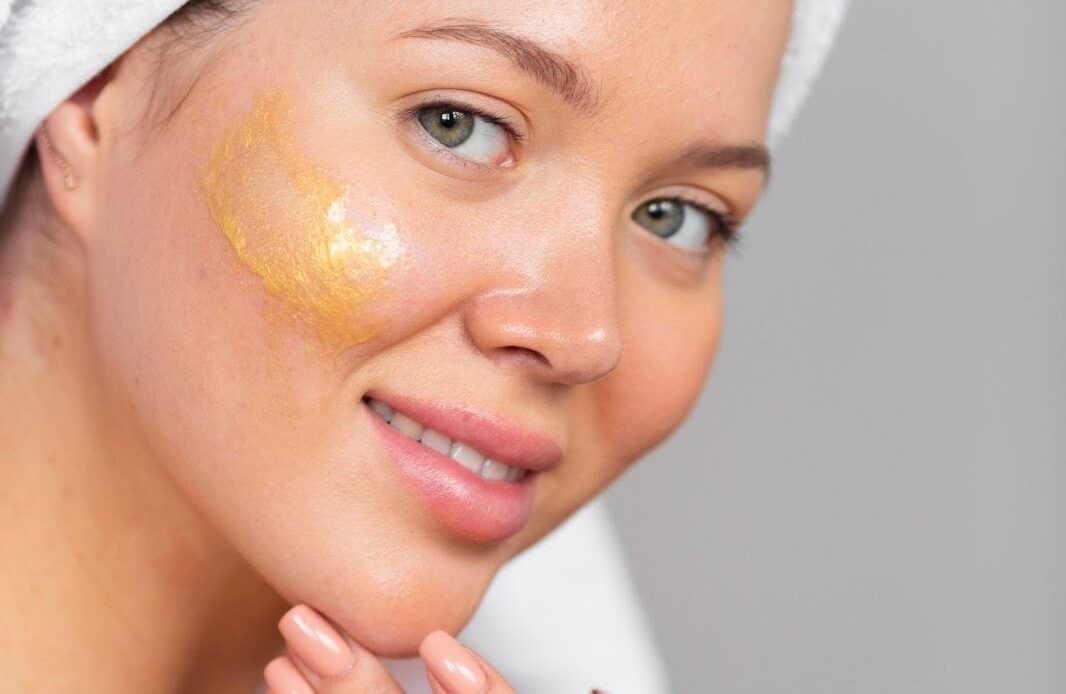For thousands of years, Ayurveda has honored ghee as one of the most sacred and therapeutic substances for both internal and external healing. Derived from cultured butter and refined through slow cooking, ghee possesses profound ojas-enhancing qualities, promoting vitality, nourishment, and longevity. When applied to the skin, especially the delicate skin of the face, ghee offers rejuvenation rooted in nature’s purity and ancient wisdom.
Today, many skincare enthusiasts explore natural remedies and rediscover the profound benefits of using a ghee moisturizer for face, appreciating its ability to hydrate deeply, soften the skin, and restore radiance without harsh chemicals.
This interest has also revived traditional Ayurvedic formulations, such as Shata Dhauta Ghrita face cream, which undergoes a meticulous 100-times washing process to enhance its cooling, soothing, and anti-ageing qualities. These preparations reflect the timeless value Ayurveda places on ghee as a skin-healing elixir.
Why Ayurveda Reveres Ghee as a Skin Healer
Ayurveda describes ghee (ghrita) as samskara anuvartana, a substance capable of carrying the qualities of herbs, nutrients, and therapeutic actions deep into the tissues. It is rich, nourishing, and packed with prana (life force), making it ideal for replenishing depleted skin.
In Ayurvedic philosophy:
- Vata is associated with dryness, dullness, and wrinkles.
- Pitta triggers inflammation, sensitivity, and uneven skin tone.
- Kapha governs moisture and firmness.
Ghee pacifies Vata and Pitta while supporting Kapha in maintaining elasticity and hydration. Its gentle, sattvic nature also enhances the skin’s glow, clarity, and softness.
Ghee and the Concept of Ojas
Ojas is the essence of immunity, vitality, and youthful radiance. Strong ojas manifests as glowing skin, bright eyes, a calm mind, and balanced emotions. According to Ayurveda, ageing, stress, harsh climates, and poor lifestyle habits deplete ojas over time.
Applying ghee to the face nourishes the deeper layers of the skin and supports ojas in several ways:
- Strengthens the skin barrier
- Reduces dryness and roughness
- Cools inflammation
- Encourages healthy cell regeneration
- Creates a protective, hydrating coat
In this way, ghee functions not merely as a moisturizer but as a rejuvenator connected to the body’s vital essence.
How Ghee Nourishes the Skin at a Deeper Level
Ayurvedic wisdom aligns with modern dermatological science when examining the skin-nourishing effects of ghee. Its unique biochemical composition makes it particularly suited for facial care.
Key Components That Benefit the Skin:
Short-Chain Fatty Acids
These deeply penetrate the skin and strengthen the lipid barrier, preventing moisture loss.
Vitamins A, D, E, and K
These fat-soluble antioxidants assist with collagen production, repair damaged tissues, and protect skin from oxidative stress.
Omega Fatty Acids
These support elasticity and help soothe inflamed or irritated skin.
Natural Emollients
These soften and smooth the skin, reducing the appearance of fine lines.
Due to its rich composition, ghee offers nourishment that extends beyond surface hydration, supporting deeper cellular rejuvenation.
Cooling and Anti-Inflammatory Properties
From an Ayurvedic perspective, excess Pitta energy can lead to redness, acne flare-ups, sensitivity, and pigmentation. Ghee’s cooling energy (sheeta guna) helps pacify Pitta imbalances on the face.
Benefits of Ghee’s Cooling Nature:
- Reduces redness and heat rashes
- Calms reactive or inflamed skin
- Soothes sunburn and irritation
- Supports healing after acne
It allows the skin to rest, repair, and regenerate more effectively.
Anti-Ageing Benefits Rooted in Ayurveda
Ageing in Ayurveda is closely linked to Vata imbalance, characterized by dryness, fine lines, thinning skin, and loss of elasticity. Ghee provides a natural counterbalance by lubricating, nourishing, and stabilizing the skin’s moisture barrier.
Ghee Supports Anti-Ageing Through:
- Deep hydration that plumps the skin
- Improved softness and elasticity
- Antioxidant protection from environmental stress
- Enhanced collagen production
- Strengthened resilience and tissue repair
Regular facial application promotes youthful radiance without relying on chemical actives or synthetic formulations.
Ghee for Skin Sensitivity and Damage Repair
Modern lifestyle factors, including pollution, excessive screen time, inadequate sun exposure, and chronic stress, can make facial skin prone to sensitivity. Ghee’s soothing qualities help restore equilibrium.
How Ghee Helps Sensitive Skin:
- Reduces micro-inflammation caused by environmental stress
- Protects against dryness from AC or harsh weather
- Supports skin healing in cases of eczema or mild dermatitis
- Forms a breathable protective layer without clogging pores
Its gentle nature makes it suitable for most skin types, particularly those with dry, mature, damaged, or irritated skin.
The Ritual of Applying Ghee to the Face
Ayurveda considers skincare a sacred ritual that connects body, mind, and soul. Applying ghee is not just an act of moisturization but a practice of self-care rooted in mindfulness and nourishment.
A Suggested Ayurvedic Ritual:
- Cleanse the face with a gentle, natural cleanser.
- Gently mist the skin with rose water or a calming hydrosol.
- Warm a pea-sized amount of ghee between the palms.
- Massage the face in upward, circular motions.
- Focus on areas of tension, such as the forehead, jaw, temples, and around the eyes.
- Allow the skin to soak in the nutrients overnight.
This ritual enhances circulation, calms the nervous system, and supports deep nourishment.
When and How Often Should You Apply Ghee?
Nighttime is Ideal
Ghee absorbs most effectively at night, when the skin naturally repairs itself.
Frequency
- For dry or mature skin: daily.
- For sensitive skin: 3–4 times a week.
- For combination skin: use sparingly on dry areas.
The face should always be cleansed before application to ensure optimal absorption.
Ghee vs. Modern Moisturizers: A Comparative View
Modern moisturizers rely on emulsifiers, preservatives, silicones, and synthetic fragrances to achieve desired textures and effects. While effective, they may irritate sensitive skin or provide short-lived hydration.
Ghee, by contrast:
- Contains no chemicals
- Works gently and deeply
- Nourishes at a cellular level
- Aligns with the body’s natural biology
- Supports long-term skin health
- Offers Ayurvedic healing along with hydration
This makes ghee an excellent alternative or complementary product to modern skincare.
The Role of Shata Dhauta Variant in Facial Care
Although plain ghee is beneficial, ghee washed 100 times offers enhanced cooling and penetration properties. It is particularly helpful for overheated, inflamed, or ageing skin.
Why the 100-times washing method enhances benefits:
- Improves absorption
- Reduces oiliness
- Increases creaminess and cooling
- Adjusts pH for skin compatibility
- Adds water molecules for hydration
Due to these refinements, it is favored for facial use by Ayurvedic practitioners.
Conclusion
Ayurveda’s reverence for ghee stems from its unparalleled ability to nourish, soothe, and rejuvenate the skin at every level. Applying ghee to the face is more than a beauty practice; it is a holistic ritual that restores balance, enhances ojas, and supports ageless radiance. With its deep hydrating properties, cooling energy, and rejuvenating capabilities, ghee continues to be one of the most trusted natural remedies for achieving glowing, healthy skin.

